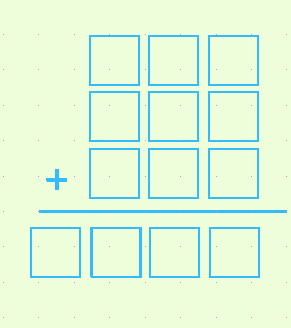Arrange the digits
Problem
Can you arrange the digits $1,2,3,4,5,6,7,8,9$ into three $3$ - digit numbers such that their total is close to $1500$?

You might like to think about how many different ways there are of getting as close as you can to $1500$.
Student Solutions
The closest total is 1503.
The first two correct answers to this problem were received from Natalie and Jake, both from the West Flegg GM Middle School. Both had arrived at the answer by trial and improvement techniques.
Later on, work by Thomas from Wymondham High School arrived. He had been a little more systematic in his search and explained how he strove initially to get the hundreds column to total 15 and the tens column to total 9. Unsuccessful at this he moved on to consider making the units column at least 20 and the tens column eight, which after a little searching gave him a result that he was satisfied with.
In whatever way the digits 1 to 9 are arranged and added together the total will always have a digital root that is 9.
e.g. 123 + 45 + 678 + 9 = 855
where 8 + 5 + 5 = 18, i.e the sum of the digits
and 1 + 8 = 9
123 + 456 + 789 = 1368
and the sum of the digits is 1 + 3 + 6 + 8 = 18
and 1 + 8 = 9
When restricted to three 3-digit numbers, they too must have a total whose digital root is 9.
Hence, 1500 cannot be a solution because its digital root is 6. While the integers 1494 and 1503 both have digital roots of 9, 1503 is nearer to 1500 than 1494.
Search for the digits which would make the units add up to 13 or 23, the tens digits add up to 9 or 8 and the hundreds digits add up to 13 or 14 e.g. 519 + 748 +236 = 1503.
See the article Divisibility Tests.
Teachers' Resources
The solution refers to digital roots of nine. This document gives some explanation of why, whatever the order of the digits $1-9$, the total will always be a digital root of nine.
